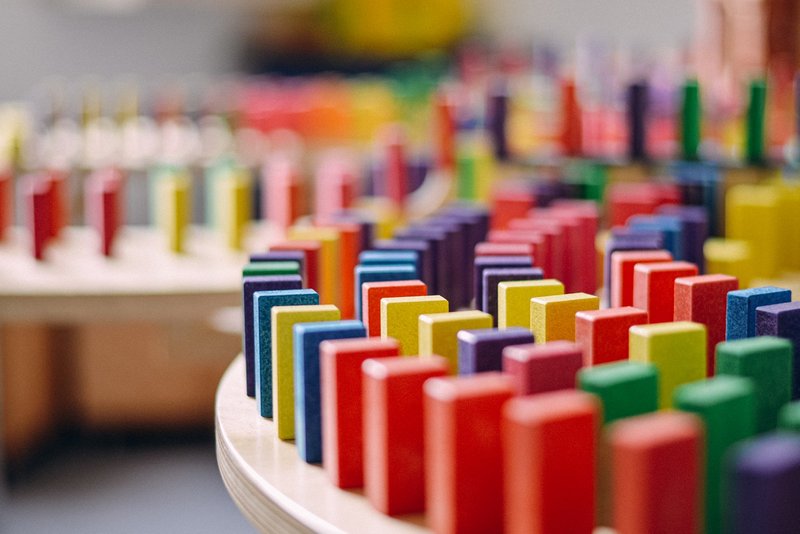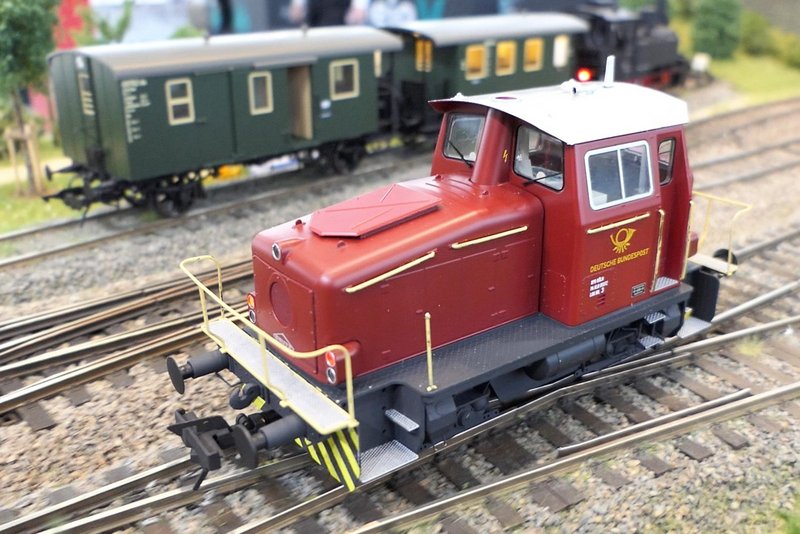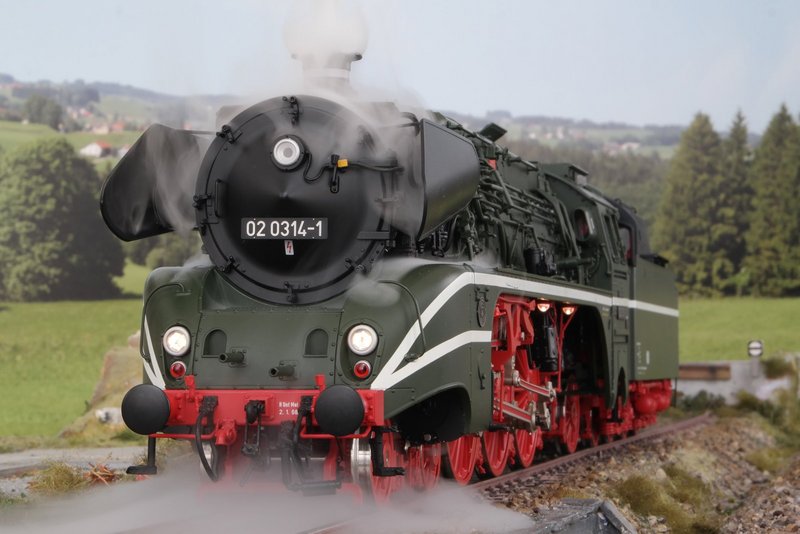
Miniature world in the cinema: Wunderland as a movie experience
Model railroad forms the backdrop
A commentary by Peter Pernsteiner

In recent years, Miniatur Wunderland in Hamburg's Speicherstadt warehouse district has become an increasingly attractive destination - not only for ambitious model railway enthusiasts and model building fans, but above all for countless families. Since 7 March, this fantastic world can be experienced on a gigantic scale of 1:87 on many cinema screens throughout Germany. An English-language version of the film is still in preparation. For 89 minutes, "Wunderland - from childhood dream to global success" takes viewers on a touching journey into the past and present of twins Frederik and Gerrit Braun. Together with numerous enthusiasts, they have realised their dream and continue to develop it further.
Impressions, animations, reviews
The feature film in Cinemascope format shows a great variety of fantastic model world tracking shots, interesting short interviews and short reports as well as charming flashbacks to the twins' younger years. The often surprising insights into the miniature world are also a musical experience thanks to the voluminous 5.1 soundtrack. They were directed by Sabine Howe, who also worked on the screenplay and has already made well over 100 documentaries and reports for television.

The cinema film in Cinemascope format shows a great variety of fantastic model world tracking shots, interesting short interviews and short reports as well as charming flashbacks to the twins' younger years. The often surprising insights into the miniature world are also a musical experience thanks to the voluminous 5.1 cinema sound. They were directed by Sabine Howe, who also worked on the screenplay and has already realised well over 100 documentaries and reports for television.
Old film sequences from the twins' early childhood are also fascinating. They document that they enjoyed playing with lots of imagination after school, but never with the same toys for long periods of time. They can be seen in the children's room with Lego bricks, toy cars and a wooden railway, as well as outdoors with a bobby car and a live chicken on a pedal tractor. Both also confess that they were passionate about recreating and re-enacting train and car crashes and were real fire brigade fans. Perhaps this is one of the reasons why fantastically staged Carsystem fire brigade missions regularly take place in Wunderland.
A difficult childhood and their own discotheque

The mood becomes reflective when Frederik and Gerrit talk about their very difficult childhood. Their father left the young family and their mother, as a single parent, had far too little time for her children. In addition, their grandparents died very young and their mother also died when they were young adults. However, Jochen W. Braun has his say on this in the film and asserts that he regrets not having taken sufficient care of his children back then. The father also describes his twins as extremely different: "Gerrit was a straight A pupil - all the way through, as far as I can remember. In any case, he got straight A's. And Frederik always dragged himself so laboriously from one year to the next. He had other things on his mind."
Frederik describes his brother as a "realist" and himself as "a bit of a dreamer sometimes". It was therefore clear to him that Gerrit was the controller of what was possible. They still trust each other completely and see themselves as "probably the most inseparable twins in Germany. This mixture could be the reason why Wunderland is so successful today. They actually laid the foundations for this back in 1990, when Frederik bought the Voilà discotheque in Hamburg together with Gerrit and Stephan Hertz during his commercial training. It's great that a little of this time can be seen in the film. After ten years, however, they wanted to do something completely different and give free rein to their childish imagination. Thanks to Stephan Hertz's interest in model railways, the inevitable happened. Together with the twins' father, the three of them founded the "Miniatur Wunderland" company in 2000 and sold the discotheque soon afterwards.
From reality to fantasy

In the film, Frederik explains that he looked at a number of railway layouts across Germany at the time and that a creative model railway layout builder was absolutely essential for Wunderland. Fortunately, they met the model builder Gerhard Dauscher, who was also enthusiastic about the project and wanted to create something really big together with a team. Gerrit emphasises that at the time they "wanted to recreate something perfectly as it really is." However, they wanted "a model landscape and not a model railway. It was very clear to us that the model railway was actually just a backdrop to create movement in a way that was very exciting and interesting for us. But we are actually building a model world."
Numerous passionate modellers had to be found for this. Old film footage of the search for employees in the form of a casting workshop is fascinating. You can see how the applicants built and designed modules on beer tent tables in the rooms of the Voilà discotheque. For Gerhard Dauscher, professional qualifications were only a secondary consideration when selecting employees, as they were looking for creative people who were prepared to portray life in an imaginative way. For Gerrit, a realist, the resulting "departure from reality in favour of fantasy" initially took some getting used to.

Frederik is delighted that the decision to tell stories on the site was made so quickly. It is therefore almost a matter of course that a corpse has to appear from time to time or that a couple in love in Venice makes a whole old house shake. It's also nice that various well-known fantasy characters from Wonderland can be seen in the film ... from Commander Spock from Star Trek and Lucky Luke to Pinocchio, Pippi Longstocking and Superman. Footage from the early construction phase of the car system for autonomous cars can also be seen. Gerrit emphasises that they very quickly realised that the vehicles had to be able to do much more than was technically possible at the time. To this end, they developed the idea of using magnetic fields under the carriageway to transmit information for lighting, speed and much more to the vehicles in the same way as Morse code.
"We live very happily in our wonderland," Frederik affirms, and you can see in numerous film sequences that his brother is also passionate about this little world. It is reported that over the years, they were happy to turn down many a tempting takeover offer or contract enquiry for handsomely paid system planning. Nevertheless, they always remained in close contact with other model railway operators.
Cooperation with modelling family in Argentina
The 46 m² Rio de Janeiro construction section plays a major role in the film. From the very beginning, the film explains how this unusual cooperation with the Martinez family modelling company in Argentina came about. They had previously built the very lively South America section for the "Gulliver's Gate" model railway layout in New York. Gerrit and Frederik first came into contact with the family at the opening of this layout and were quickly convinced that with the aura of this family business, Rio in Wonderland could be really great.

However, the film shows impressively that it was anything but easy to get there. Gerhard Dauscher, who was primarily responsible for plant construction, was initially very sceptical and feared competition for the creative employees in Hamburg. There are many nice episodes that show how well the cross-ocean co-operation developed. For example, there are joint music sessions and volleyball games in their free time during visits to Argentina for detailed plant planning. However, the family business first had to learn that the requirements from Hamburg in terms of operational safety were very high. Especially because Wunderland is often open up to 14 hours a day. In the film, it is also very touching to see how the whole Martinez family visits Wunderland in Hamburg for the opening of the construction phase and, together with the twins, is delighted with the wonderfully staged Rio de Janeiro. It is located directly at the end of the 25 metre long pedestrian bridge, which connects the two Speicherstadt buildings used by Wunderland at a height of 16 metres above the Kehrwiederfleet.
The challenge of Formula 1 and the next construction phases
Of course, there is much more to say about this wonderful cinema film, as it also gives employees a chance to have their say and provides some fascinating glimpses behind the scenes, of which the construction of the Formula 1 race track in Monaco is just one example. This project was probably the biggest technological challenge for Gerrit Braun, who is still actively involved in the development and programming of Wunderland. The Formula 1 racetrack is based on tiny, individually controllable magnetic fields under the road. The passive racing car models move with astonishing realism thanks to a highly complex computer control system that has been developed over many years. The film provides examples of the problems that have arisen in controlling the vehicles precisely and there is also a very funny episode: instead of a racing car, one of the typical light blue mobile toilet cubicles actually drives around the racetrack.
The grand opening of the Monaco & Provence construction phase with a 63 m² model area, eagerly awaited by many fans, is scheduled for 25 April 2024. The centrepiece will of course be the staging of the famous Formula 1 city circuit "Circuit de Monaco". In 2025, the rainforest with 107 m² and the Caribbean with 67 m² will follow. And the first part of the Asia model world is scheduled for the end of 2026.
Secrets of success

Miniatur Wunderland will hopefully never be finished, as this is the only way visitors will be able to discover and experience something new a few years later. An incredible amount has happened since the opening in August 2001. At that time, the installation consisted of three construction phases: Central Germany, Austria and the fantasy city of Knuffingen. In the meantime, around 10,000 minifigures "live" in Knuffingen alone and, according to the latest press release for the cinema film, Miniatur Wunderland has a total of 289,410 inhabitants. The largest model railway layout in the world currently occupies 1610 m² of the 10,000 m² company premises in Hamburg's Speicherstadt warehouse district. There are 1,166 trains in operation on 16,491 metres of track. There are also many self-driving cars, 30,000 litres of real water with some real floating ships and a 150 m² airport with 52 aircraft that take off and land very realistically. So it's no wonder that Hamburg's number one tourist attraction now attracts around 1.5 million visitors a year.
Finally, Sebastian Drechsler reveals another little secret of success in the film. The 14 years younger half-brother of Frederik and Gerrit Braun has been press spokesman since 2006 and is effectively Wunderland's "foreign minister". He propagates that Wunderland's success lies in its irrationality and inefficiency and "that we are so successful because we are not like any other interchangeable economic complex." He also emphasised very early on that the company, which now has more than 300 employees, must in principle think uneconomically when planning its systems, but is ultimately economical.
Miniatur Wunderland
The largest model railway in the world is a magnet for visitors in Hamburg.
- Idea: Frederik and Gerrit Braun
- Visitors per year: 1.5 million
- Address: Miniatur Wunderland Hamburg, Kehrwieder 2, 20457 Hamburg – Speicherstadt
- Opening: 16 August 2001
- Tracks: 16,138 m (52,946 ft) of track in H0 scale
- More facts: Visit Miniatur Wunderland on Wikipedia
- Homepage: Miniatur Wunderland
About the author Peter Pernsteiner:
Peter Pernsteiner, graduate engineer and freelance journalist, discovered his love of technology journalism while studying electrical engineering and soon after joined the editorial team of a major ICT trade magazine. Since 1994, he has been writing as a freelance journalist, particularly on technology topics - including for model railway magazines. In 2016, he also launched a YouTube channel for technology reports, which has since attracted worldwide attention.




